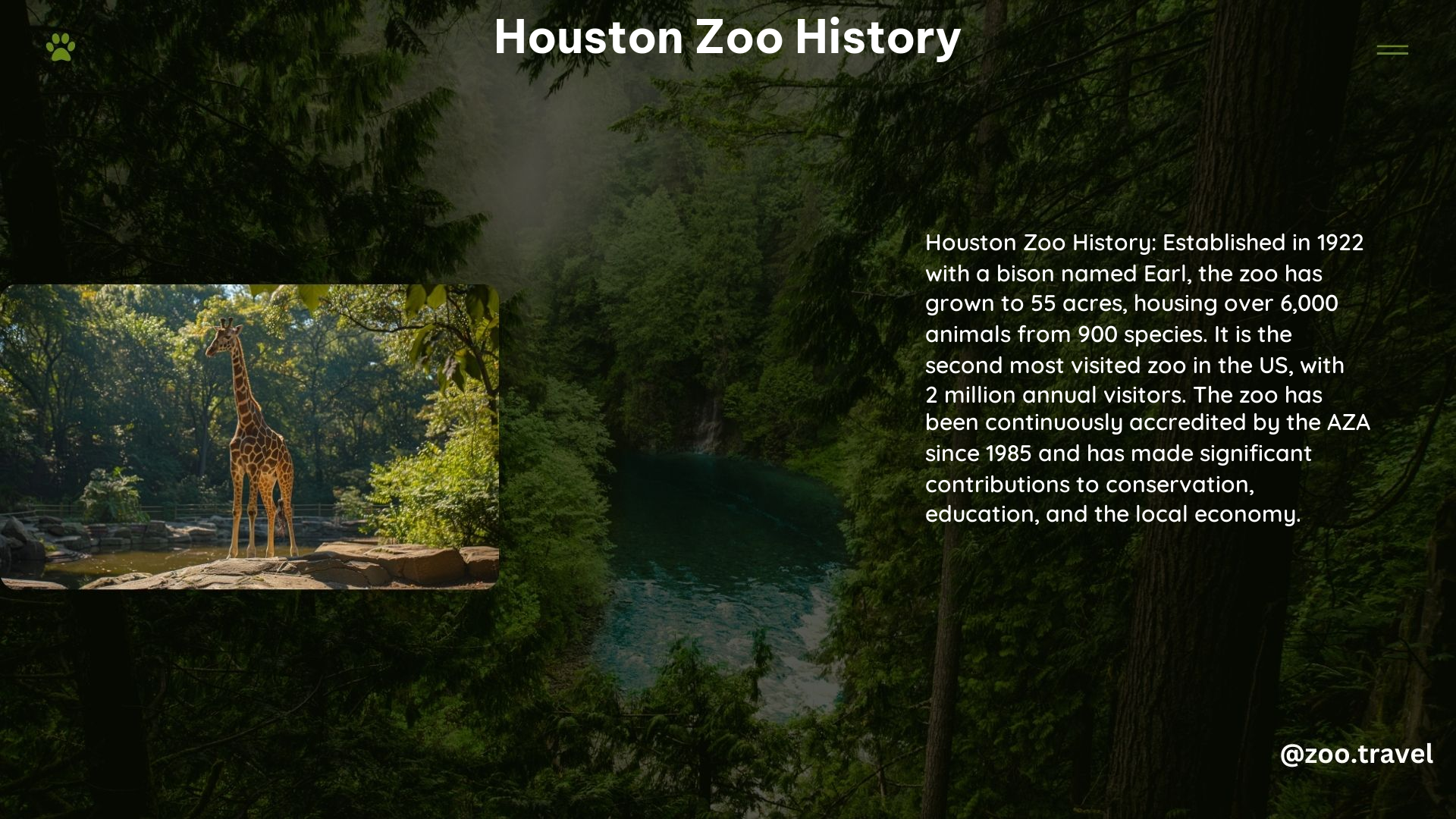The Houston Zoo has a rich and fascinating history that spans over a century, from its humble beginnings as a small enclosure housing a single bison to its current status as a world-renowned conservation and education center. This blog post will take you on a journey through the remarkable evolution of this beloved institution.
The Humble Beginnings of the Houston Zoo
The Houston Zoo’s story began in 1922 when the City of Houston built a fence in Hermann Park to house Earl, a bison donated from a traveling circus. This marked the humble beginnings of the zoo, which initially covered only two acres. Over the next few years, the zoo continued to grow, acquiring its first elephant, Ellie, in 1924.
The Rise of the Houston Zoo

In the following decades, the zoo continued to expand and acquire new animals. One of the most notable additions was the arrival of a live cougar named Shasta in 1947, who became the official mascot of the University of Houston. As the zoo grew, so did its reputation, and in 1985, it was continuously accredited by the Association of Zoos and Aquariums (AZA), a testament to its commitment to the highest standards of animal care and conservation.
The Transition to Non-Profit Status
In 2002, the Houston Zoo underwent a significant transformation when it became a non-profit organization, signing a 50-year lease and operating agreement with the City of Houston. This change in status allowed the zoo to shift its focus towards conservation and education, becoming a leader in these areas.
The Houston Zoo Today
Today, the Houston Zoo spans 55 acres and is home to over 6,000 animals from more than 900 species. It features a wide range of exhibits, including the African Forest, McNair Asian Elephant Habitat, and Texas Wetlands, showcasing the diversity of the animal kingdom. The zoo’s commitment to conservation is evident in its support of 33 wildlife conservation projects across 17 countries, including local efforts to protect the Houston toad.
The Economic Impact and Recognition
The Houston Zoo has a significant impact on the local economy, contributing $310 million and creating 2,119 job opportunities in the Houston-Woodlands-Sugar Land metropolitan region in 2023 alone. The zoo has also received numerous accolades, including recognition from the Houston Business Journal and the Association of Fundraising Professionals, solidifying its status as a beloved and important institution in the city.
Key Facts and Figures
| Fact | Value |
|---|---|
| Year Opened to the Public | 1922 |
| First Animal | Earl the bison |
| Original Purpose of the Fence | To house Earl the bison and other animals |
| Current Size | 55 acres |
| Number of Animals | Over 6,000 from more than 900 species |
| Annual Visitors | Around 2 million |
| Accreditation | Continuously accredited by the AZA since 1985 |
| Conservation Projects | 33 projects across 17 countries |
| Economic Impact | $310 million and 2,119 job opportunities in 2023 |
The Houston Zoo’s history is a testament to the power of dedication, conservation, and community. From its humble beginnings to its current status as a world-class institution, the zoo has continuously evolved to meet the needs of both its animal residents and its human visitors. Whether you’re a long-time fan or a first-time visitor, the Houston Zoo’s captivating history is sure to inspire and delight.
